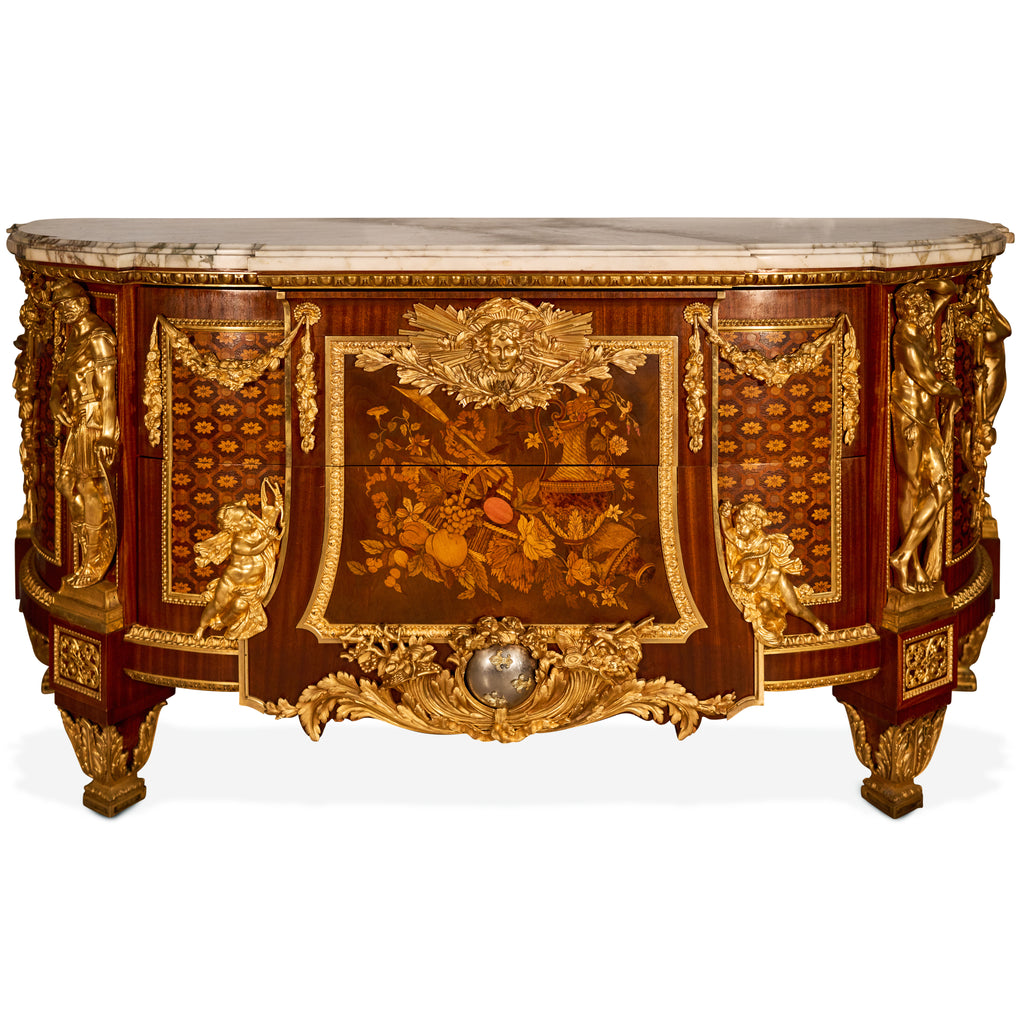A 19th CENTURY FRENCH ORMOLU MOUNTED COMMODE AFTER JEAN-HENRI RIESENER
$118,000.00
A 19th CENTURY FRENCH ORMOLU MOUNTED COMMODE AFTER JEAN-HENRI RIESENER
France, Circa 1880
In the Louis XVI style using mahogany, kingwood and fruitwood, mounted with fine quality ormolu mounts. The two-drawer and two-side door "D" shaped commode fitted with a brèche grise de Serraveza marble top resting on the base with four armorial bronze figures emblematic of courage, force, Prudence and Tempérence. The centre marquetry panel with a floral still life and vase design flanked on each side by cherubs emblematic of Bienfaisance and Justice, below a sunburst mask ormolu mount; the lower apron cantered with a silvered sphere with fleur-de-lis applications surmounted by two floral cornucopias. The rounded sides each fitted with a cupboard door.
Dimensions
Height: 38.5" (97.8 cm)
Width: 81" (205.7 cm)
Depth: 29" (73.6 cm)
This commode is after of the celebrated model delivered in 1775 by Jean-Henri Riesener to King Louis XV for his private apartments at the Château de Versailles. It is now in the Musée Condé, Château de Chantilly.
This commode is after of the celebrated model delivered in 1775 by Jean-Henri Riesener to King Louis XV for his private apartments at the Château de Versailles. It is now in the Musée Condé, Château de Chantilly.
Jean-Henri Riesener, (born July 4, 1734, Gladbeck, Münster [Germany]—died Jan. 6, 1806, Paris, France), the best-known cabinetmaker in France during the reign of Louis XVI.
Riesener was the son of an usher in the law courts of the elector of Cologne. After moving to Paris he joined the workshop of Jean-François Oeben in 1754, and, when Oeben died in 1763, Riesener was put in charge of the workshop and later married his master’s widow. He made his name by completing and delivering to Louis XV the famous bureau du roi (“king’s desk”), begun by Oeben. In 1774 he was made royal cabinetmaker and from then onward was the regular supplier of furniture to the queen, Marie-Antoinette. Although he was one of the most versatile of cabinetmakers, his services were in little demand during the French Revolutionary period because of his political status.
Riesener was the son of an usher in the law courts of the elector of Cologne. After moving to Paris he joined the workshop of Jean-François Oeben in 1754, and, when Oeben died in 1763, Riesener was put in charge of the workshop and later married his master’s widow. He made his name by completing and delivering to Louis XV the famous bureau du roi (“king’s desk”), begun by Oeben. In 1774 he was made royal cabinetmaker and from then onward was the regular supplier of furniture to the queen, Marie-Antoinette. Although he was one of the most versatile of cabinetmakers, his services were in little demand during the French Revolutionary period because of his political status.
















